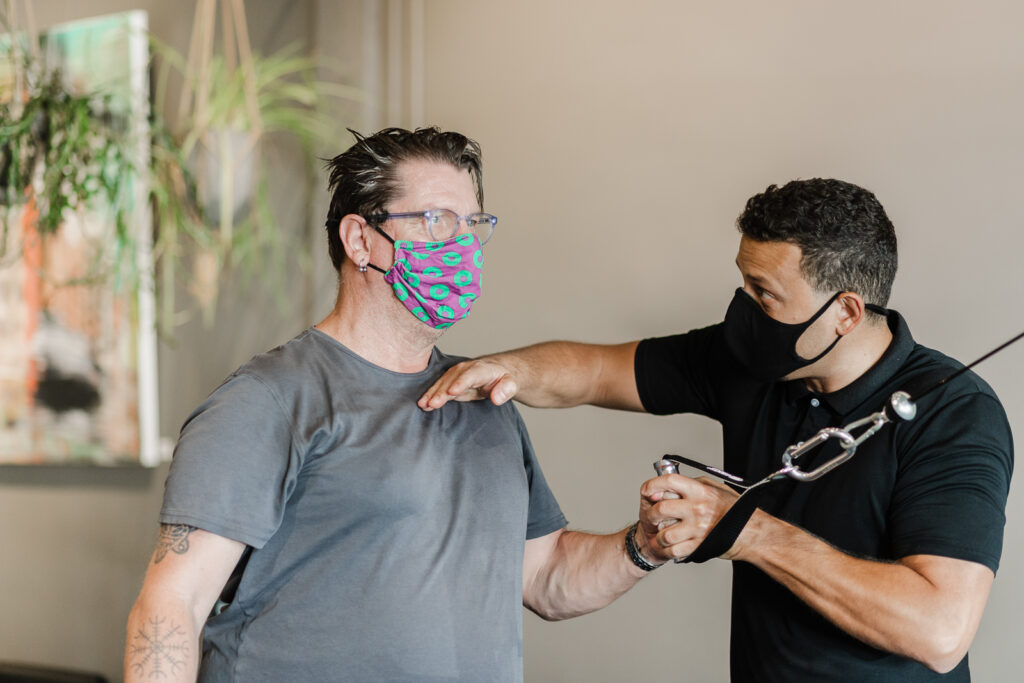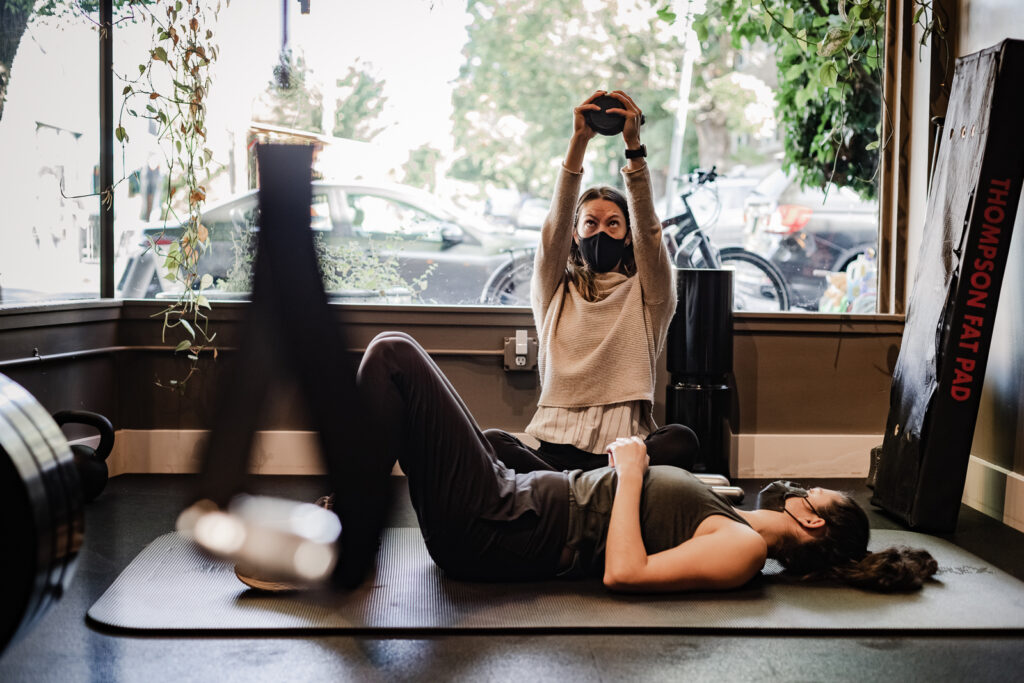We define bracing as the simple act of creating midline stability while being able to breathe. This is often mislabeled as “core-training,” a term not generally accepted in our clinic. The challenge for bracing in our clinic is to simply create a 360-degree wall of firmness around the midsection. This, as with the first foundation of breathing, is a skill that all humans must learn to begin to create motion. As a newborn, a motion must be attached to at least one stable thing. This stable thing should logically be at the center of mass, which is roughly two inches below your navel. This is a task that all humans, in the absence of a congenital or development issue, have already achieved. Every time you laugh, cough, sneeze, or have a challenging bowel movement; you brace. This really means that there are two challenges to address here. 1 – You don’t know how to consciously use this skill to your advantage 2 – You must be able to do this while breathing.
Most people naturally brace when they pick up something heavy. Have you ever held your breath when you have to pick up an awkward object? That’s bracing. Most people can just breathe or just brace, but few people can do both well in our evaluations. The body is constantly negotiating the somewhat competitive tasks of breathing or bracing. The tug and war of respiration and stability. To achieve the maximum at either end, the diametric opposite must be sacrificed. This is why competitive power athletes take a huge breath in and hold it during a maximum lift. They are choosing to maximize their stability at the expense of respiration. This is fine for a single lift, but most of life is not a single lift. Most of life is a combination of needing both respiration and stability. In fact, nearly ALL sports require both.
Through organic logic, the body will always prioritize breathing, as the breath is life itself. So if a person does not know how to breathe AND stabilize the midsection, the body will sacrifice stability for respiration. This is a significant problem for most people, especially athletes and those that need to use their body for their profession. The body is constantly adapting to the use of ineffective systems of stability because it has forgotten the skill of bracing. Once this skill can be taken online again, the body can effortlessly up or down-regulate the amount of bracing based on the tasks at hand. Until a safe and stable midline can be established, all rehabilitative processes are rendered minimally effective. If the center is faulting, all other systems will fail as well.


